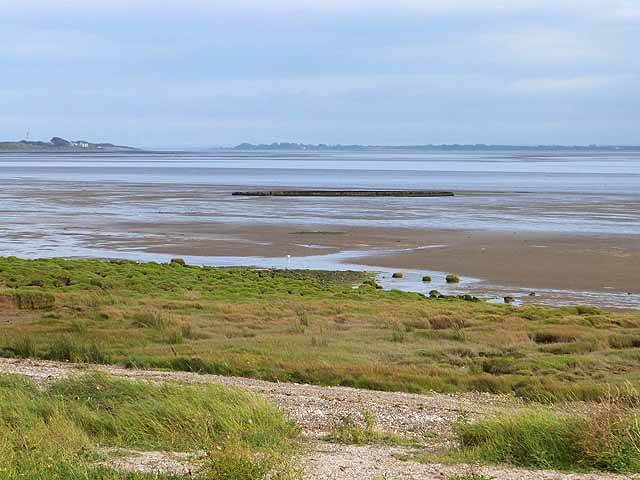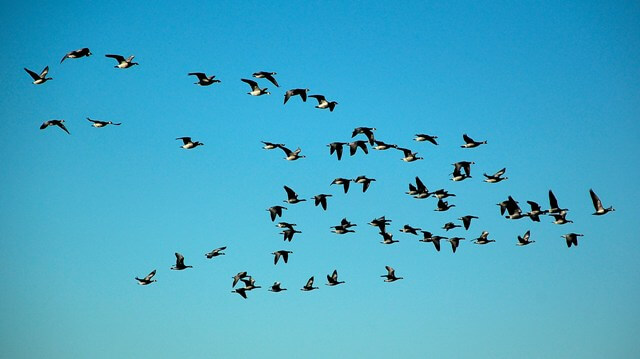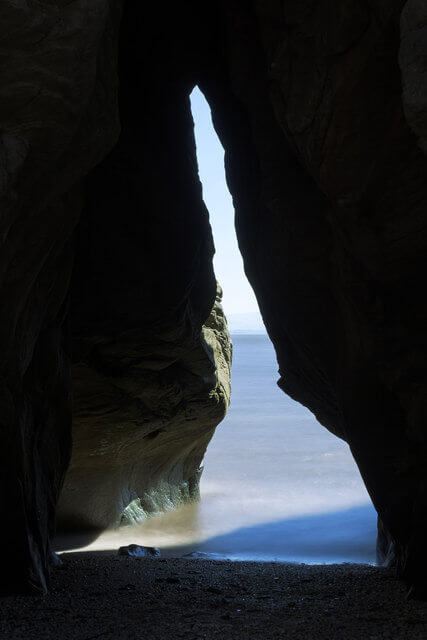Death on the shore
January 30, 2022, 2:49 pm , by Richard Lutz
Richard Lutz walks along The Solway and encounters something he didn’t bargain for…

It’s all sand, marsh, wind. The Solway estuary separates England and Scotland, the shoreline stretching for miles. Intermittent winter sun bounces off the clouds and rays of silver light plunge into the water. It brings a sheen to the shallow estuary. Across the Solway Firth is England’s Lake District; on the horizon is the hazy outline of Cumbrian ridges.
The path, here on the Scottish side, skirts the upper beach and avoids fhe wet sands. Then it wanders up along a dried line of marshgrass and seaweed. There’s a corpse of a bird, dessicated, dead for a month. And another. And then another. In a mile, we pass a hundred dead birds, eerily lined up as if their decomposing bodies were placed by design on the edge where wetlands meet the sea. Some of the remains had been half eaten. Some had withered away. Skeletal wings mark the upper beach. ’They’re barnacle geese’ says a friend who knows these things. ‘Avian flu killed them.’
It seems the disease erupted before Christmas and scythed through the geese. Experts say the epidemic had spiked. But warn that avian flu has a bad habit of returning after a peak.

We can’t really avoid this lethal line of decomposing birds. We step over them, around them, try to ignore them. By the time we reach Southerness Lighthouse, where the shore angles north up the curving Solway, the long line of the dead has petered out. ’I guess nature can’t be beautiful all the time.’ says a nearby beachwalker.
Sadly, it’s estimated avian flu has killed about 3500 barnacle geese, around ten percent of the flock that flies down from the Spitsbergen archipelago each year to winter on the Solway. I’m told they feed on the Scottish side of the estuary and, remarkably, sleep across the water on the English side.
Just past the lighthouse, leaving the remains behind, we come upon this gem:

On the map, it’s simply marked as Natural Arch. Nothing more, nothing less. No name. But locally, it’s Thirlstane Arch, a right proper Viking name, meaning more or less a hole in a stone and obviously linked to a hammer wielding Norse chieftain infused with an insatiable passion for the carboniferous period of geology and its sandstone rock formations.
The arch was created by two big slabs leaning against each other. You enter from a cul de sac of sand and scrub trees, bend down through the tight archway and the estuary, the whole of the silvery Solway, unfurls like a light-infused painting. There is a sound of curlews and oystercatchers searching for a late lunch and enough sun to sit for a while in a nick of rock and look towards The Lakes.
Who knows, maybe it should be re-named Goose Arch in honour of the dead waterfowl that lined our path on this day, a day littered with cloud, pulses of rain and, thankfully, a burst of warm spring air.
photos: James Johnstone




Mike Sutton
There seems to be a lot of avian flu about. Derbyshire has road signs about it.
Sue J from Birmingham
Cannon Hill Park had a notice to say avian flu there.
Spoke to the gardener and he said he had to deal with around 80 deaths. Predominately Canadian geese, but two swans and some mallards, a few pigeons. Started around Christmas better now but struggled to get anyone to do anything and he felt as the gardener wasn’t his job and pretty distressing.
So he left the dead swan, press then took photos and highlighted the issue. Rangers eventually asked for sick birds to be left for testing, but when they went to the yard they’d been eaten by a fox …….
Emma McKittrick
So sad
Paul Harper
Interesting….it’s good to get around
Scott the naturalist
Avian flu is virulent and nearly always lethal. It affects birds globally.
From what I’ve recently read, the British environmental agency hasn’t done a stellar job of protecting rivers and lakes, which are often connected hydrologically.
Not that the EPA in the States has done all that well here, thanks to lobbyists with pockets stuffed with wads of cash.
Steve Steiner
Hills and their heights across the Solway from Southerness Point…
High Pike 2159
Green How 1054
Longlands Fell 1585
Knott 2330
Great Cockup 1726
Great Calva 2264
Blencathra 2848
Bakestall 2209
Skiddaw 3055
Gallowbarrow Hill 302
Dodd 1647
¿Helvellyn 3197
Sale Fell 1178
Lord’s Seat 1812
Ling Fell 1224
Whinlatter 1723
Grisedale Pike 2596
Crag Hill 2750
Grasmoor 2796
Bowfell 2950
Great Gable 2950
Scafell Pike 3209
Pillar 2927
Scoat Fell 2760
Blake Fell 1880
Caw Fell 2287
Knock Murton 1467
Crag Fell 1716
Lank Rigg 1775
Blakely Raise 1273
Dent 1155
Carrie Miles
beautiful photographs
Jeff Doane
Saw a dead beached whale off Cape Cod…natural or manmade ?
Will Travel
We tend to read your things over a meal aiding our digestion
Bill Weismann
Loved the Viking name!!
Neil Grant
, really enjoyed the photographs if not the sad commentary.
Subscribe to new posts.